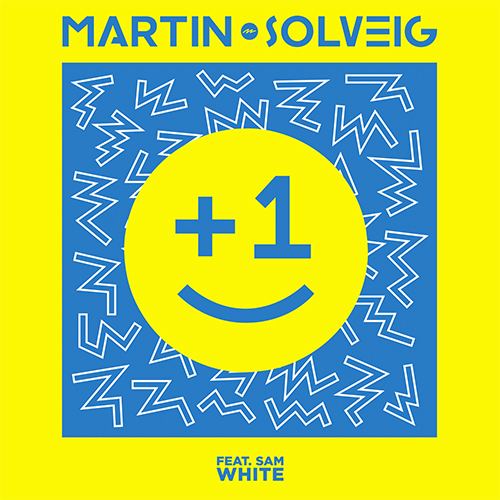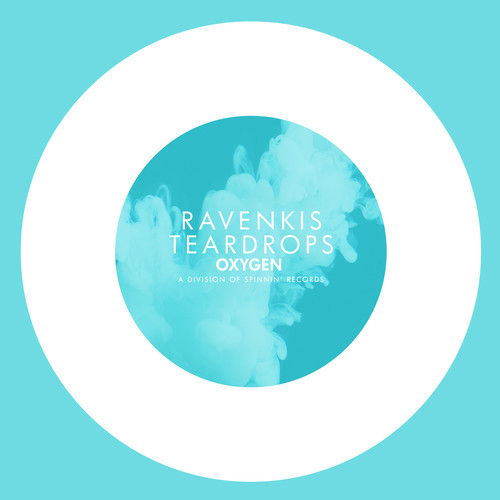-
 play_arrow
play_arrow
Clubalicious Clubalicious Radio
-
 play_arrow
play_arrow
London Calling Podcast Yana Bolder

“Here’s your headline,” says Kim Fowley, who occasionally refers to himself in the third person. “‘Kim Fowley and the Runaways recorded “Cherry Bomb” in a store room on purpose.’ We didn’t have an equipment list. We barely had equipment. But we had a plan.’ Then everybody reads it, and this will be the best article you’ve written in 10 years.” Fowley, who helped form The Runaways and produced their first album, has really thrown down the gauntlet here, especially considering that “Cherry Bomb” could be considered a dubious choice for a “Classic Track.” It’s kind of a garage band song, and the band’s eponymous debut album, which includes “Cherry Bomb,” barely cracked the Billboard 200.
But “Classic Tracks” aren’t just about hits, and “Cherry Bomb,” written by Fowley and a then-unknown rocker named Joan Jett in 1976, marked the debut of America’s first all-girl rock band. Go back and listen, and those punk guitars and racy vocals sound just as tough as they did back then:
Can’t stay at home, can’t stay at school
Old folks say, ya poor little fool
Down the street I’m the girl next door
I’m the fox you’ve been waiting for
Hello Daddy, hello Mom
I’m your ch ch ch ch ch ch cherry bomb
Fowley had been in the music biz for almost 30 years when he met founding Runaways members Jett and Sandy West. He made his first studio recording in 1949, when he was 10, and from that point on, he was never not working in studios, or writing, publishing or producing bands. “I’ve sold 102 million records in a 50-plus-year career,” Fowley points out. “I’ve produced everybody, worked with almost everyone. The Beach Boys did songs I published. I’ve recorded with Andrew Loog Oldham, who was producer of the Rolling Stones. Jimmy Page and John Paul Jones of Led Zeppelin played behind me on a song that I did. It’s a huge list.”
Fowley’s credit list also includes The Byrds, Warren Zevon, KISS, the Hollywood Argyles, Frank Zappa’s Mother’s of Invention, Cat Stevens, Alice Cooper, Jonathan Richman, BTO, The Germs and Nirvana, to name a handful of the acts that have capitalized on Fowley’s songs, productions and his keen, intangible sense of what music the public wants. And he says he knew he had something great from the moment he met Joan Jett, whom he has called the “musical child of Keith Richards and John Lennon.”
“Teenaged girls with guitars,” he states. “We knew it from the day it started. And we were in a hurry. It only took 17 weeks for the band to form, rehearse, play, learn songs and get a deal with Mercury Records, with no demo.”
A major-label deal with no demo? “Kim Fowley is a genius and knows how to do things,” Fowley says.
But let’s get back to the forming part. Fowley hooked Jett up with West. Next to join was bassist Micki Steele, who didn’t stay with the band but later became known as Michael Steele, bassist in The Bangles. Cherie Currie — then only 16 — joined next as the group’s lead vocalist, followed by future metal guitar icon Lita Ford. The last piece of the puzzle was the bassist who appears on The Runaways album, Jackie Fox. Fowley then brought the group he calls the “fabulous five” into Artie Ripp’s Fidelity Recording in Studio City, Calif., to make their first album; the lead track was “Cherry Bomb,” a song that is rumored to have been written in five minutes, on the spot for Currie’s audition: “There was rock ‘n’ roll magic there,” Fowley says. “It was no problem.”
Fowley says he chose to record at Fidelity because of the studio’s atmosphere, but he doesn’t mean that in a good way. “We were in the B room, which was a remade storeroom,” he says. “It was awful. But it wasn’t scary. It was the kind of studio you wanted a garage product out of. A lot of young bands go into studios with chandeliers and red-velvet rugs and a receptionist who looks better than they do, and they’re terrified. But if you walk into a room where they store stuff, you’re not going to be intimidated. You’re going to swagger about: ‘What a horrible place. Oh, well, we’ve played a lot of horrible places. This is nothing new.’”
“Studio B was like I had rooms and I converted them into a studio when need be, as opposed to Studio A, which was a studio all the time,” clarifies Ripp, who founded Fidelity in 1971. “Studio B was a control room and a reasonable-sized office — kind of a large conference room. The other side of the back wall was the front office so you could easily blow away anything that was going on in the front office. But there was an intimacy in the room and there was a sound that was tight and alive, despite its lack of, shall we say, visual amenities.”
Behind a 16-channel Quantam console for The Runaways’ first sessions was the studio’s chief engineer, Andy Morris, whom we were unable to locate for this article. Fowley recalls that Morris was “a genius engineer. He understood every accident that makes a hit record. It’s the accidents and the things you leave out that make a record.”
What else does Fowley remember about working in Fidelity? “Chaos, madness, fighting, drama. Seizing the moment. Changing the world. Boredom,” he says. “And no guests. No visitors. No parents, no record company, nothing. We were at war. We didn’t have time to entertain in the foxhole. No drugs or alcohol either. Fast food. You always play obnoxious rock ‘n’ roll when you eat bad fast food.”
When asked if he recalls what equipment was used on these sessions, Fowley says, “How should I know? I don’t engineer anything; I can’t even drive a car. I sit there and dream and do conceptual supervision, and all the guys who are technical interpret it. I’ve never bothered to learn anything other than if it sounds good or bad.
Classic Tracks: Mudhoney “Touch Me I’m Sick”
“Anyway, it was all awful. It was sub-par. It was old. It was like Ingmar Bergman says: ‘I always use bad equipment so my actors perform better.’ Here’s the trick: Hey morons, don’t worry about the equipment, worry about the song and the players and the singers and make sure that some person in the public will want to own the recording when it’s finished.’”
Stand back, Fowley’s just getting warmed up: “Nirvana didn’t show up with a list of equipment, and say, ‘We demand this equipment.’ They said, ‘Let’s go make a record like we’ve always wanted to; now we can. Here we are, let’s rock.’ I don’t care about the egghead aspect of your readership. Eggheads, I am a moron, and I sold 102 million records not knowing anything about equipment, but I knew the song, I knew the tone of the voice and what tone and tempo and timbre was, and I understood there had to be some tuning, and I understood somebody had to buy it, and I always left holes in the arrangement so people could smoke dope, get drunk, fall in love, have fights, have sex, go for a ride, or if they’re lonely, keep from killing themselves. You’re making records for the listener, not for yourselves, so get off of that, ‘Oh, we must have an Aphex Aural Exciter,’ or the modern equivalent of that demand. Go get your own studio. Get your mom to buy you a Fostex and a manual, and you can start your own Failure Sound Studios upstairs in your baby brother’s nursery.”
Clearly, no one’s going to get anything more from Fowley on the subject of equipment, but at Mix, we have our ways.
Joey Latimer, an engineer, composer, musician and label owner who currently lives and works in Idyllwild, Calif., apprenticed at Fidelity Recording in the late ’70s, and though he wasn’t present for The Runaways sessions, he remembers what equipment would have been used in Studio B. He says they would have recorded to a 3M M79 16-track machine with Dolby B NR. The speakers were 12-inch three-way JBLs. Ironically, Fowley does admit to using an Aural Exciter on this project, and Latimer says there was also a BX10 spring reverb in that room that engineers would patch into the EMT 150 plates in Studio A. Also on hand were LA-2A and 1176 limiters, Pultec EQs, Roger Meyer noise gates and outboard API EQs. Fidelity also offered a host of Neumann and AKG tube mics, as well as models such as the Shure SM57, Electro-Voice RE20 or 666, and Sennheiser 421 and 441s.
So it doesn’t sound like Fidelity’s gear was actually sub-par — it would have been quite a nicely equipped 16-track studio in its time. Whatever the reason, the studio was the perfect environment for The Runaways to unleash their five-girl rock rebellion.
“Kim Fowley was a visionary,” says Ripp, whose 40-plus-year résumé includes producing hits from the Shangri La’s to the Lovin’ Spoonful to Billy Joel and so many others. “He was creative, demanding, energetic and he understood he was dealing with something new. He wasn’t making a Xerox. He encouraged the freedom and creativity and energy that he knew the girls had; they were young, they were impressionable, and they were teenaged girls connected with their experience of being girls playing in a guy’s world.”
Ripp sold Fidelity Recording in 2002 to Tom Weir, who renamed it Studio City Sound. The studio has remained busy and recently hosted Exene Cervenka of X, recording a cover of “Cherry Bomb.”
In addition to continuing to produce, record, perform and write music, Fowley has a weekly program that’s part of Little Steven’s “Underground Garage” on Sirius/XM satellite radio. He’s also been consulting with the producers and actors who are working on a movie about The Runaways, set for release in June 2010. The film stars Michael Shannon as Fowley, Kristen Stewart as Jett and Dakota Fanning as Currie.
The real Cherie Currie left The Runaways after the band completed three albums (The Runaways, Queens of Noise and Live in Japan). She made more recordings, including an album with her twin sister, Marie Currie, and she has acted in films and TV shows. The band recorded two more albums after her departure, with Jett singing lead. Sandy West remained with the band till the bitter end; after they broke up in 1979, she continued to record and perform, and worked as a drum teacher. She was diagnosed with cancer 2005 and died the following year.
Bassist Jackie Fox left the band in 1977 and became a Harvard-educated attorney. Lita Ford went solo after The Runaways split, recording several successful hard-rock albums, including last year’s Wicked Wonderland. Jett, of course, became the best-known graduate of The Runaways. She founded Blackheart Records with producer Kenny Laguna when she couldn’t get a U.S. label deal for the debut album by Joan Jett & The Blackhearts. Her hits include “Bad Reputation,” “I Love Rock ‘n’ Roll,” “I Hate Myself for Loving You” and others. She continues to tour and record, and is one of the executive producers of the forthcoming Runaways biopic in which, rumor has it, the actresses portraying the bandmembers actually perform “Cherry Bomb” and other Runaways songs.
“A lot of the older stuff comes back, gets re-used or re-recorded,” Fowley says, “and I’m grateful for that, but I’m always interested in tomorrow. Each day I have a new song, and each new song is better than any song I’ve ever written.”
Many thanks to Joey Latimer for providing technical information and contacts related to this article.
This article was first posted in January, 2010.
Written by: Admin
Similar posts
Recent Comments
No comments to show.Featured post

Latest posts
Current show
Upcoming shows

Stardust
Bergwall
07:00 - 08:00
Norwegian Dance Chart
Top 40 Hottest Tracks in Norway
09:00 - 11:00
Fresh Is Fresh
THIS WEEKS HOTTEST DANCE RELEASES FROM DEE JAY PROMOTIONS
11:00 - 16:00
Future Disco
Carley Foxx
16:00 - 17:00
Finnish Dance Chart
Top 40 Hottest Dance Tracks In Finland
17:00 - 19:00Chart













